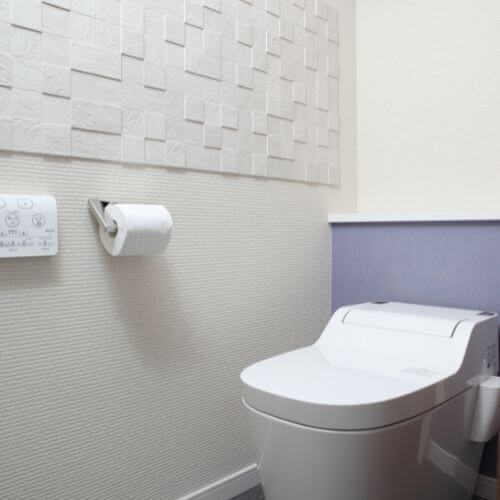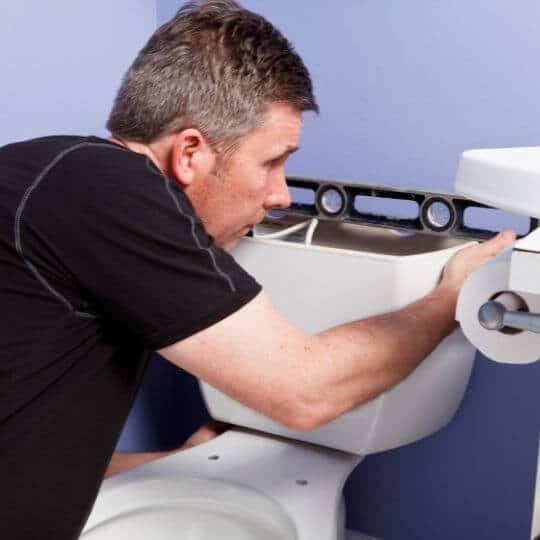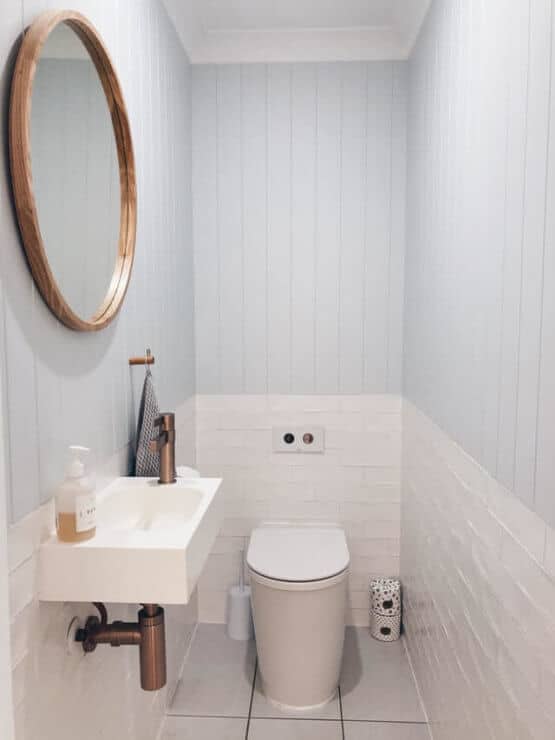Let’s be honest – any bathroom fixture can break over time or show other problems in functioning. The real problems arise when fixtures causing problems are the ones needed the most. One of those is toilets.You probably heard of upflush toilets – the one kind of toilet that can be installed virtually anywhere. While that sounds plausible, for a lot of people it may also seem “too good to be true”. So, they search up for common upflush toilet problems in order to discover if this bathroom fixture is worth the purchase.
Are Upflush Toilets Reliable?

Upflush toilets are not as common in use as regular, traditional toilets. This is one of the reasons why people doubt their reliability.
However, the reason why they are not as common is that they are built for uncommon locations in the need of toilets. Those places usually include basements or any other off-the-grid location where plumbing isn’t as available.
This is because of how upflush toilets work. The way in which they work is unique.
As the name itself says – they upflush the waste after you flush the toilet.
In other words, the waste gets through the pipe and into the unit called a pump or a macerator. This is where the waste gets shredded by a blade, after which it pumps up into the main drain line.
In fact, one of the main advantages of upflush toilets is that they can be installed below the sewer line.
Also, speaking of reliability, they can last up to 10 to 15 years! This is especially true about the most popular upflush toilets – the Saniflo upflush toilets. [1]
They don’t require the existing plumbing nearby, but can also be attached to an existing sanitary ware. Upflush toilets are also in a way portable, hence their ease of installation and the possibility of changing their location.
The most important part of this unit is the previously mentioned pump or macerator. It doesn’t require much maintenance, other than changing it every 10-15 years.
All of these qualities make upflush toilets a reliable and safe option for off-the-grid locations. However, there are still some problems one might face with using them.
Let’s discuss each of those and the way of solving them.
Common Upflush Toilet Problems And How To Fix Them?

Now let’s dive deeper into what upflush toilet problems are and how you can fix them.
Before you take a look at them, keep in mind two different things:
- A large quantity of these problems can happen with a regular toilet too. This doesn’t mean each of them is superior to one another, but it’s good to keep in mind.
- Even for the problems which specifically target only upflush toilets – they usually aren’t that bad. They don’t happen as often, and most importantly – they definitely don’t happen all at once.
This is crucial information for the buyers as seeing a huge list of the potential problems of a product can be devastating. If you opt for buying an upflush toilet, this list can serve you as a guide for solving potential future problems.
- Clogs More Easily
Starting with a tough one – upflush toilets tend to be more sensitive to what you are flushing. Even with a blade inside a pump, it’s designed to flush only human waste and toilet paper.
Avoid flushing things such as human hair, diapers, condoms, or other non-flushable products. It goes without saying, but this rule should apply to all types of toilets in order to avoid clogging.
If you worry about this happening, the best thing you can do is install a macerating pump behind a toilet. Not installing it behind a wall allows for better access to a pump in case of a clog in the future.
- The Need For Frequent Use
This one may sound contradictory, because – in fact – you don’t want an upflush toilet being used too often. Using it every day numerous times by different people can overwork the pump and cause it to fail.
On the other hand, there is a need for this toilet to be flushed at least once per day. This way you keep the pump in good working condition.
If you were out on a vacation and haven’t used it in a while, you might need to restart the pump.
- Higher Initial Cost
Initially, macerating toilets cost more than the traditional ones. That simply means that you’ll have to pay more money at first.
However, most don’t see this as a huge drawback as it pays off over time. Also, you won’t need to pay a plumber for the installation, as you would for the traditional toilet.
- Shorter Warranty
The warranty for upflush toilets is 2 years. [3] This is less than what you would get with the traditional toilets, with a warranty of 3 years or more.
Of course, if you do get a need for repair during this time, make sure to consult a professional. You don’t want to mess with the problem yourself as this can void the warranty.
- Noise
The upflush toilet is not much different from the outside to the other types of toilets. However, the one difference it has can make much more noise than all the other, gravity toilets.
It’s the macerator that shreds the waste after flushing. This necessarily makes some noise so you’ll be best off with installing the toilet in a location according to that.
- Macerating Pump Failing
As briefly mentioned previously, a pump may fail if overworked. This means that an upflush toilet is simply not designed to work as frequently as the other toilets.
If this does happen, you can try locating the clog first. If it won’t unclog itself, it has to be removed, as it’s mostly inside a macerator.
- Macerator Randomly Starts Working
When a macerator starts going off even without anyone flushing, this is an inside problem. Typically, it includes a damaged rubber membrane.
In this case, there is not much one can do other than to replace the rubber membrane. If your toilet is still under warranty period, then the company should replace this for you.
- Power Cuts
Macerating toilets can’t run without electricity. They need it both to shred the waste and pump it back into the main sewer line.
This usually isn’t a cause for concern. However, if this bathroom fixture fails, it may cause power cuts.
Usually, it’s the macerating pump that is damaged, but it’s best to consult a professional in this case.
- The Bad Smell
The bad smell around the toilet may not be because yours is an upflush one.
It’s crucial for you to have a proper cleaning routine to keep the toilet clean. [4] This way you can prevent those ugly streaks in your toilet, as well as the bad smells.
- Leaking
A leaky toilet is definitely a problem no one wants to face. In the case of an upflush toilet, it can be because of many different things.
As a macerating toilet starts to deteriorate over time, certain faults in its mechanism may arise. This is especially the case with the leaky pump unit.
However, it might be just a case of a damaged rubber membrane. That’s why it’s crucial to consult a professional to detect a part that needs to be replaced.
The Takeaway
Now you’re fully aware of all of the upflush toilet potential problems. It should be easier for you to decide if you want to make a purchase.\
However – just remember – every bathroom fixture needs maintenance and fixing from time to time. So even if you buy the upflush toilet, we hope this article helps you tackle some of its problems.

Michael Davis is a heating & plumbing expert who currently works as independent contractor in SC. He also writes for Plumbertip.
For almost 10 years he worked on various plumbing tasks across South Carolina.


